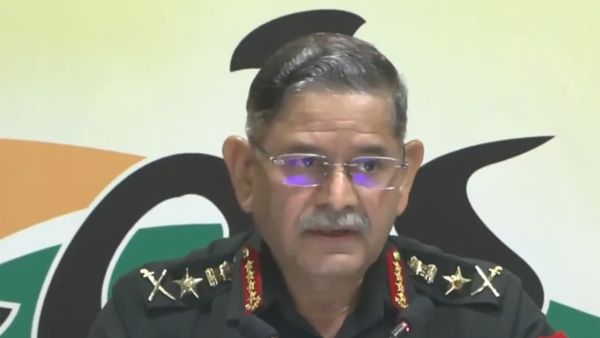
Chief of the Army Staff (COAS) General Upendra Dwivedi on Wednesday highlighted the importance of open-source and predictive analysis during Operation Sindoor 1.0 and gave credit for contributions from domestic volunteers and the Indian diaspora. He said the Army has learned valuable lessons from the operation and is now looking to harness these insights for future missions, including Sindoor 2.0.

While addressing the Delhi Defence Dialogue, COAS General Upendra Dwivedi said, "Open source analysis and predictive analysis, in Sindoor 1.0, helped us. A lot of volunteers came forward inside the country, the diaspora came forward and helped us... We were very much empowered as far as Sindoor 1.0 is concerned; we have learnt our lessons."
"Therefore, whether it is Sindoor 2.0 or any other battle thereafter, we are looking at it in a big way on how to harness this initiative...," he added further.
Earlier, COAS General Upendra Dwivedi called for the democratisation of technology, geographic diffusion, and the use of demographics in terms of citizen soldiers and merchants for modern warfare.
Addressing the Delhi Defence Dialogue 2025 at the Manohar Parrikar Institute for Defence Studies and Analyses (MP-IDSA), the COAS, General Dwivedi, highlighted the evolving role of technology on contemporary battlefields, citing the use of drones and artificial intelligence in the Ukraine-Russia conflict as a live example.
"As far as the future battlefield is concerned, it is the era of jostling and competition. The long piece is declining, and comprehensive conflicts are on the rise. Means technology is going yellow. Over 50 ongoing conflicts and more than 100 nations; we are watching closely the Ukrainian battlefield because it is a living lab of the conditions along our borders. Drones are stalking armour columns, AI is jamming radios, and precision fires are hitting well beyond 100 km," the COAS said.
Considering the three Ds -- democratisation, diffusion, and demography -- the COAS called for the use of AI, robotics, and cyber tools in the grey zones of warfare.
"I'll give out three Ds, which are changing the war scenario today. Democratisation, that is the newest technology, and it has already been shown that the platform alone is not relevant. It has to have a number of layers supported by this democratised phenomena that is AI, quantum, robotics, auto system... DW that is energy weapons, cyber tools, especially in the grey zone. Diffuse geographic independence, but dependent. And Demography, you have Citizen soldiers, guardian forces, and even merchants now play roles in conflicts, sometimes selling equipment to both sides," he said.
(Except for the headline, this story has not been edited by Asianet Newsable English staff and is published from a syndicated feed.)